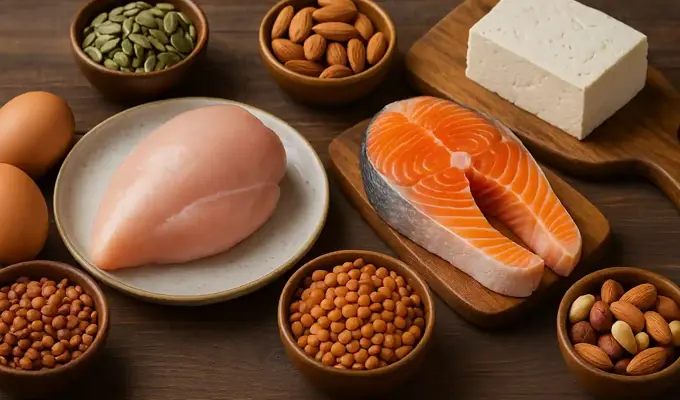Curious about understanding your body's fat composition better? Dive into our Body Fat Calculator to reveal your exact fat percentage.
This tool not only reveals your current fat levels but also assists you in setting goals to achieve your ideal weight for optimal body fat composition.
Utilizing renowned formulas such as the U.S. Navy and Covert Bailey methods, this calculator provides accurate insights. Moreover, for those interested in calculating their lean muscle mass, we offer a dedicated Lean Body Mass Calculator.
Explore these tools to gain a comprehensive understanding of your body's composition.
SIGN UP FOR YOUR FREE DAY PASS TODAY!
How GymNation Body fat Calculator Works
Simply input your details, hit 'Calculate', and let the magic unfold. Our calculator seamlessly integrates with charts from three esteemed health and fitness institutions, providing a clear picture of your health status at your current weight. With this insight, you can set a goal weight that aligns with a healthy body fat percentage, setting you on a path to optimal well-being.
Body Fat Calculator
The amount of body fat one has can be quantified in several ways. One percent body fat in kilograms depends on the individual’s total body weight. For instance, if a person weighs 80 kg, 1 percent body fat would equate to 0.8 kg.
To determine the total body fat of an 80 kg person, one must consider the percentage of body fat. If the individual has 20% body fat, that would amount to 16 kg of body fat (80 kg x 0.20).
Understanding the difference between BMI (Body Mass Index) and body fat percentage is crucial. BMI is a simple calculation using height and weight to categorize individuals into different weight ranges, but it does not differentiate between muscle and fat. Conversely, body fat percentage specifically measures the proportion of fat in the body, offering a more accurate reflection of body composition and overall health.
THE HEALTH RISKS OF EXCESSIVE BODY FAT PERCENTAGE
According to the World Health Organization (WHO), obesity ranks as a top preventable cause of death globally, with an alarming 111,909 to 365,000 annual fatalities in the U.S. alone.
The Centers for Disease Control and Prevention highlight that a staggering 36.5% of U.S. adults fall under the obesity category, making it a pressing health concern.
At 20% body fat, one is generally considered to have a healthy and average body composition, especially for men. It is possible to look fit and athletic at this level, particularly if muscle mass is high.
On the other hand, 15% body fat is often regarded as excellent for men, reflecting a lean and fit physique, and is a common target for those seeking a more defined appearance.
To reduce body fat by 10%, a combination of consistent physical activity, dietary adjustments, and potentially behavioral changes is necessary. Incorporating regular cardiovascular exercise, strength training, and a balanced, calorie-controlled diet can effectively contribute to fat loss. It is crucial to approach this process gradually and sustainably to ensure long-term health benefits.
THE MULTIFACETED IMPACT OF OBESITY
Obesity doesn't just affect physical health; it diminishes the quality of life, exacerbates mental health issues, and can lead to conditions like obstructive sleep apnea. More critically, it's linked to major global death causes, including cardiovascular diseases, strokes, specific cancers, and diabetes. These complications can significantly shorten life expectancy, making obesity a focal point for numerous medical studies.
THE HORMONAL IMBALANCE AND ITS CONSEQUENCES
Body fat is responsible for producing essential hormones. An imbalance—whether excess or deficiency—can impede the body's proper functioning. Notably, research indicates that surplus body fat, especially around the abdomen, can disrupt the equilibrium and functionality of these hormones.
THE ROLE OF VISCERAL FAT IN HEALTH COMPLICATIONS
Visceral fat, a type of body fat, is implicated in releasing specific cytokines—proteins vital for cell signaling. This can heighten the risk of cardiovascular diseases. Moreover, visceral fat is directly linked to elevated levels of "bad cholesterol" (LDL) and reduced "good cholesterol" (HDL).
Elevated LDL cholesterol can block arteries, paving the way for heart-related complications. Additionally, visceral fat contributes to insulin resistance, a precursor to high blood sugar levels and type 2 diabetes. Clearly, an excess of visceral fat poses tangible threats to one's health.
A GUIDE TO ESTIMATING BODY FAT AT HOME
While there are precise methods for measuring body fat, such as Dual-Energy X-ray Absorptiometry (DEXA) and hydrostatic weighing, might be out of reach due to their cost and accessibility. However, you can still get a reliable estimate of your body fat percentage right at home. All you need is a flexible measuring tape or a dependable skinfold caliper.
BMI (BODY MASS INDEX) METHOD: A QUICK OVERVIEW
The BMI method offers a basic estimation of body fat percentage using age, sex, height, and weight. While it's the simplest method, it's also the least precise. Ideal for those avoiding the intricacies of measuring tapes or calipers, it's primarily designed for sedentary individuals.
CIRCUMFERENCE MEASUREMENT TECHNIQUES: A RELIABLE APPROACH
Circumference measurements, employed in the U.S. Navy and Covert Bailey methods, provide a dependable way to gauge body fat. Using a non-stretchable measuring tape, measurements are taken around specific body parts. It's crucial to ensure consistency: measure against bare skin, keep the tape parallel to the floor, and apply uniform tension. For accuracy, wear thin undergarments, skip the shoes, and measure at the same time daily, pre-activity.
U.S. NAVY METHOD: MILITARY PRECISION
Developed by the U.S. Navy, this formula uses body circumference measurements to ascertain body fat content, ensuring service members meet body fat standards. For women, neck, waist, and hip measurements are essential, while men can skip the hip measurement.
Waist measurements are taken around the navel area. For specifics, refer to the calculator's help section. Generally, this method boasts an accuracy of about 3.5%.
COVERT BAILEY METHOD: A MODERN TAKE
Named after fitness guru Covert Bailey, this method has gained global traction. With over three decades in the fitness realm, Bailey's approach is seen as one of the latest body fat measurement formulas. Impressively, its tape-measure test accuracy is within 2.0% of hydrostatic weighing results.
SKINFOLD MEASUREMENTS METHOD
Skinfold measurements, a staple in local gyms, are a popular method personal trainers use to gauge body fat. While skinfold calipers can provide accurate results, they demand training and expertise. Typically, the more skinfold sites you measure, the more accurate the results.
For best practices, always refer to the caliper manual. Remember to measure from the body's right side and ensure consistency by taking multiple readings. If there's a discrepancy of more than 2 mm between two measurements, consider a third.
DURNIN-WOMERSLEY SKINFOLD METHOD: A POPULAR CHOICE
Widely recognized, the Durnin-Womersley method is a favorite among many. However, it tends to overestimate body fat in fit individuals. Both men and women undergo four skinfold measurements at identical sites.
THE IMPORTANCE OF MANAGING BODY FAT
While body fat plays a crucial role in hormone regulation, an excessive amount can lead to a myriad of health complications. Here's why it's essential to keep your body fat in check:
1. CARDIOVASCULAR CONCERNS:
High body fat levels can escalate the risk of heart disease by contributing to high blood pressure and elevated levels of bad cholesterol. These factors can, in severe cases, result in strokes, making it a leading cause of death in the U.S.
2. HORMONAL IMBALANCES IN WOMEN:
Excessive body fat can trigger an overproduction of male hormones in women. This hormonal imbalance can manifest as facial hair growth and acne.
3. RISK OF DIABETES:
There's a direct link between high body fat and type 2 diabetes. Individuals with a high body mass index (BMI) combined with a high body fat percentage are particularly susceptible to developing this condition.
4. COMPLICATIONS DURING PREGNANCY:
Women with elevated body fat levels face higher risks during pregnancy. This includes a greater likelihood of premature births, birthing children with health issues, and the necessity for Cesarean deliveries.
OTHER FITNESS CALCULATORS
Methods of Measuring Body Fat
Various techniques exist to assess body fat percentage, including skinfold measurements, bioelectrical impedance analysis (BIA), dual-energy X-ray absorptiometry (DEXA), and hydrostatic weighing. Each method offers different levels of accuracy and accessibility.
Source: Wikipedia
Healthy Body Fat Ranges
For men aged 40 to 59, a body fat percentage of 11% to 21% is considered healthy; for those 60 to 79, the range is 13% to 24%.
Source: Harvard Health


















































































